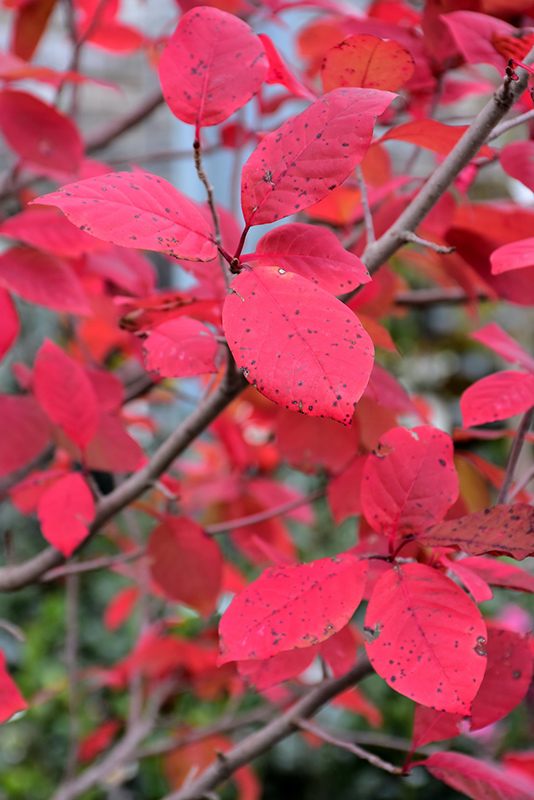Tupelo or Sour Gum, Tower Nyssa sylvatica 'WFH1' Height: 40 feet Spread: 20 feet
Sunlight:
Hardiness Zone: 4a Other Names: Tupelo, Black Tupelo, Sour Gum, Pepperidge Description: A beautiful native variety producing foliage that matures to a glossy dark green, then fiery scarlet, orange, and yellow in fall; columnar habit with strong branching; prefers moist, organic rich soils. Prefers protection from strongest winds Ornamental Features Tupelo or Sour Gum, Tower is primarily valued in the landscape for its rigidly columnar form. It has forest green deciduous foliage. The glossy pointy leaves turn outstanding shades of scarlet, orange and yellow in the fall. It produces black berries in early fall. The furrowed black bark adds an interesting dimension to the landscape. Landscape Attributes Tupelo or Sour Gum, Tower is a deciduous tree with a strong central leader and a narrowly upright and columnar growth habit. Its average texture blends into the landscape, but can be balanced by one or two finer or coarser trees or shrubs for an effective composition. This is a relatively low maintenance tree, and is best pruned in late winter once the threat of extreme cold has passed. It is a good choice for attracting birds to your yard. It has no significant negative characteristics. Tupelo or Sour Gum, Tower is recommended for the following landscape applications; Planting & Growing Tupelo or Sour Gum, Tower will grow to be about 40 feet tall at maturity, with a spread of 20 feet. It has a high canopy of foliage that sits well above the ground, and should not be planted underneath power lines. As it matures, the lower branches of this tree can be strategically removed to create a high enough canopy to support unobstructed human traffic underneath. It grows at a medium rate, and under ideal conditions can be expected to live for 70 years or more. This tree does best in full sun to partial shade. It does best in average to evenly moist conditions, but will not tolerate standing water. This plant should be periodically fertilized throughout the active growing season with a specially-formulated acidic fertilizer. It is not particular as to soil pH, but grows best in rich soils. It is somewhat tolerant of urban pollution. This is a selection of a native North American species. Special Attributes Flowers are insignificant, Generally no berries unless both male & female are within a half mile distance of each other. It has a sturdy taproot. ![]()
![]()
![]()
![]()
![]()
![]()
![]()
![]()
![]()
![]()
![]()
![]()
![]()
![]()


